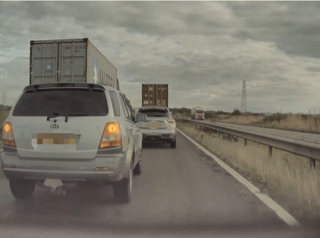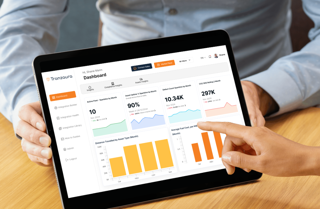By Paul Lawrence, managing director of Add Secure UK, North America and Australia.
The year has scarcely begun, but already Britain has been caught in storms and freezes that have halted large areas of the country.
Whilst many Brits can avoid an icy commute by working from home, this is not a privilege every industry can afford.
In these winter months, fleet operators are faced with the challenge of ensuring goods and produce reach their destination, whilst keeping drivers and vehicles safe in extreme weather conditions.
Winter weather causes hassle for vehicles and drivers. Ice, floods or roads blocked from the aftermath of a storm can set driver schedules back hours, and in times of strain, flexibility is desperately needed. Installing a fleet management system can be one way to cut back on unexpected delays, allowing operators to manage vehicles journeys and driver safety remotely.
Driving in adverse weather conditions can be dangerous for any size of vehicle, let alone a truck.
In wet and snowy weather, stopping distances become doubled, meaning drivers are required to slow down to protect themselves and other road users.
Unfortunately, this can lead to delayed delivery times, or push a (commercial) driver's daily driving time over the nine hour limit.
To tackle this, a fleet management system can remotely reroute a vehicle's journey and schedule whilst considering the slower driving speed.
Another major concern for fleet operators is driver safety, particularly for those operating in rural areas.
Snow, fog and high winds can make driving heavy goods vehicles unsafe, so should an accident occur fleet operators need to be able to keep track of vehicles and identify any incidents.
Lone workers driving in areas where mobile signal is unreliable will benefit from tracking devices on their vehicles. This will minimise the risk of being stuck in a vulnerable situation, giving drivers and operators peace of mind.
Artificial intelligence (AI) is also making waves in revolutionising fleet safety. Operators should be leveraging new technology to improve driver safety.
AI-enabled camera sensors are now able to detect collisions and hazardous situations, providing real-time updates to operators.
The systems use computer vision algorithms to monitor the road ahead and alert drivers of potential dangers.
Should an accident occur in a remote location, operators can respond appropriately, potentially saving lives.
However, it’s not just extreme winter weather that can impact vehicles and drivers. In 2022, temperatures in the UK soared to over 40°, the highest on record according to the Met Office.
This unveils a new concern for operators, particularly in the food or medical transportation sector, where a temperature-controlled environment is crucial to delivery success.
Fortunately, ensuring goods are maintained at the right temperature is much easier, with remote monitoring solutions.
These systems will alert drivers of any temperature breaches and provide customers with reports upon delivery.
The British weather has a knack for being unpredictable, but with the right technology installed, unforeseen delays can become a concern of the past.
Taking these measures will also improve vehicle safety, giving operators peace of mind whilst drivers focus on getting the job done.






















Login to comment
Comments
No comments have been made yet.